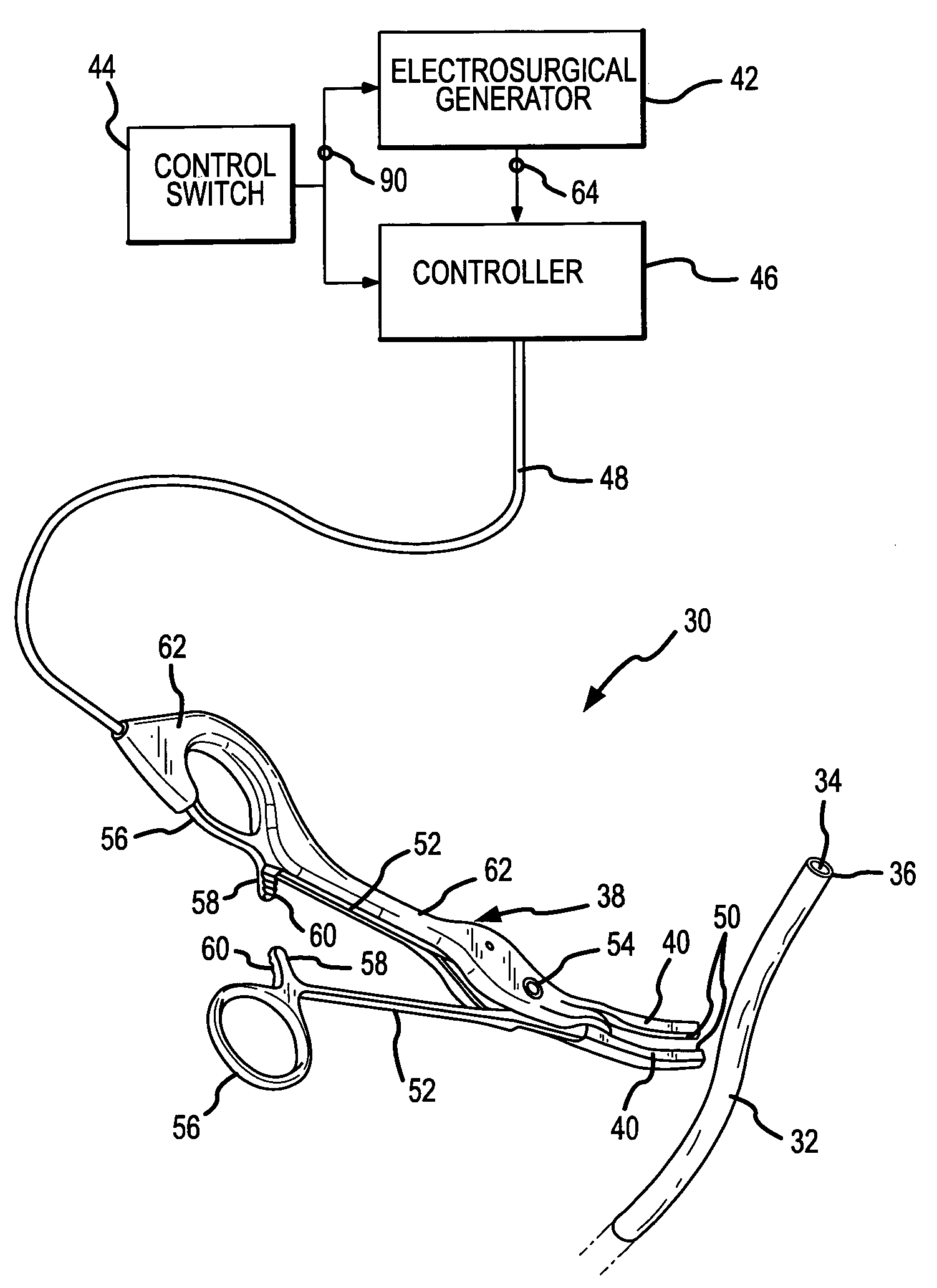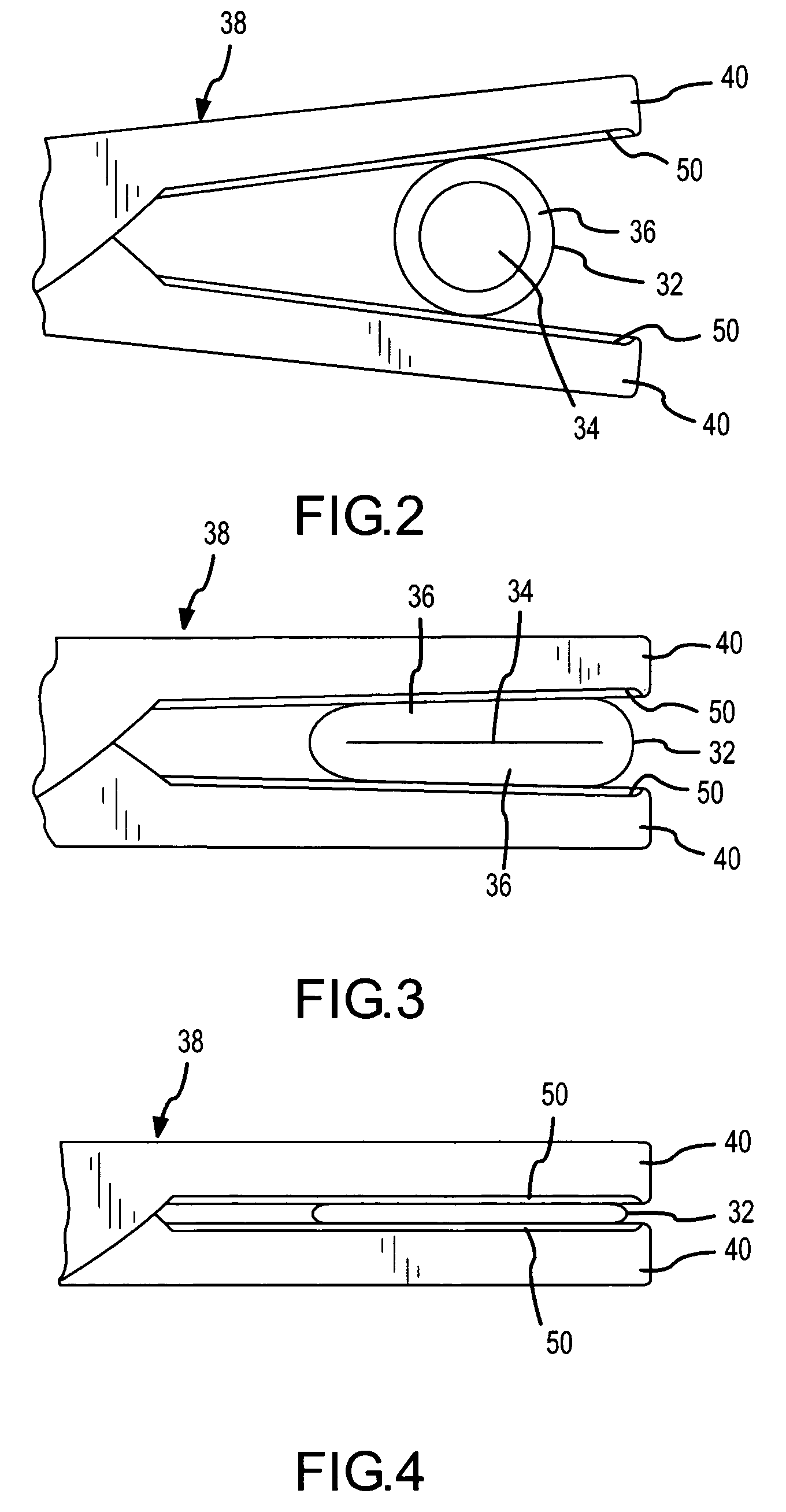Method and apparatus for precursively controlling energy during coaptive tissue fusion
a coaptive tissue and energy control technology, applied in the field of precursive control energy during coaptive tissue fusion, to achieve the effect of reducing the risk of recurren
- Summary
- Abstract
- Description
- Claims
- Application Information
AI Technical Summary
Benefits of technology
Problems solved by technology
Method used
Image
Examples
Embodiment Construction
[0030]A coaptive biological tissue sealing apparatus 30, the use of which also exemplifies the practice of a method of coaptively sealing biological tissue, both of which incorporate the present invention, is shown in FIG. 1. The coaptive tissue sealing apparatus 30 is used to permanently close a lumen, duct, passageway or chamber formed in and surrounded by the biological tissue. The biological tissue is exemplified in FIG. 1 (and FIGS. 2-4) by a biological vessel 32, such as an artery or vein. Other examples of biological tissue which may be permanently sealed by use of the present invention include fallopian tubes, bile ducts, tissue surrounding an aveoli or air sac in the lung, the colon or bowel, and any other structure where ligation might otherwise be performed.
[0031]For the present purposes of describing preferred embodiments of the sealing apparatus 30 and the coaptive sealing method which incorporate the present invention, the vessel 32 will be used as an example of the bi...
PUM
 Login to View More
Login to View More Abstract
Description
Claims
Application Information
 Login to View More
Login to View More - R&D
- Intellectual Property
- Life Sciences
- Materials
- Tech Scout
- Unparalleled Data Quality
- Higher Quality Content
- 60% Fewer Hallucinations
Browse by: Latest US Patents, China's latest patents, Technical Efficacy Thesaurus, Application Domain, Technology Topic, Popular Technical Reports.
© 2025 PatSnap. All rights reserved.Legal|Privacy policy|Modern Slavery Act Transparency Statement|Sitemap|About US| Contact US: help@patsnap.com



